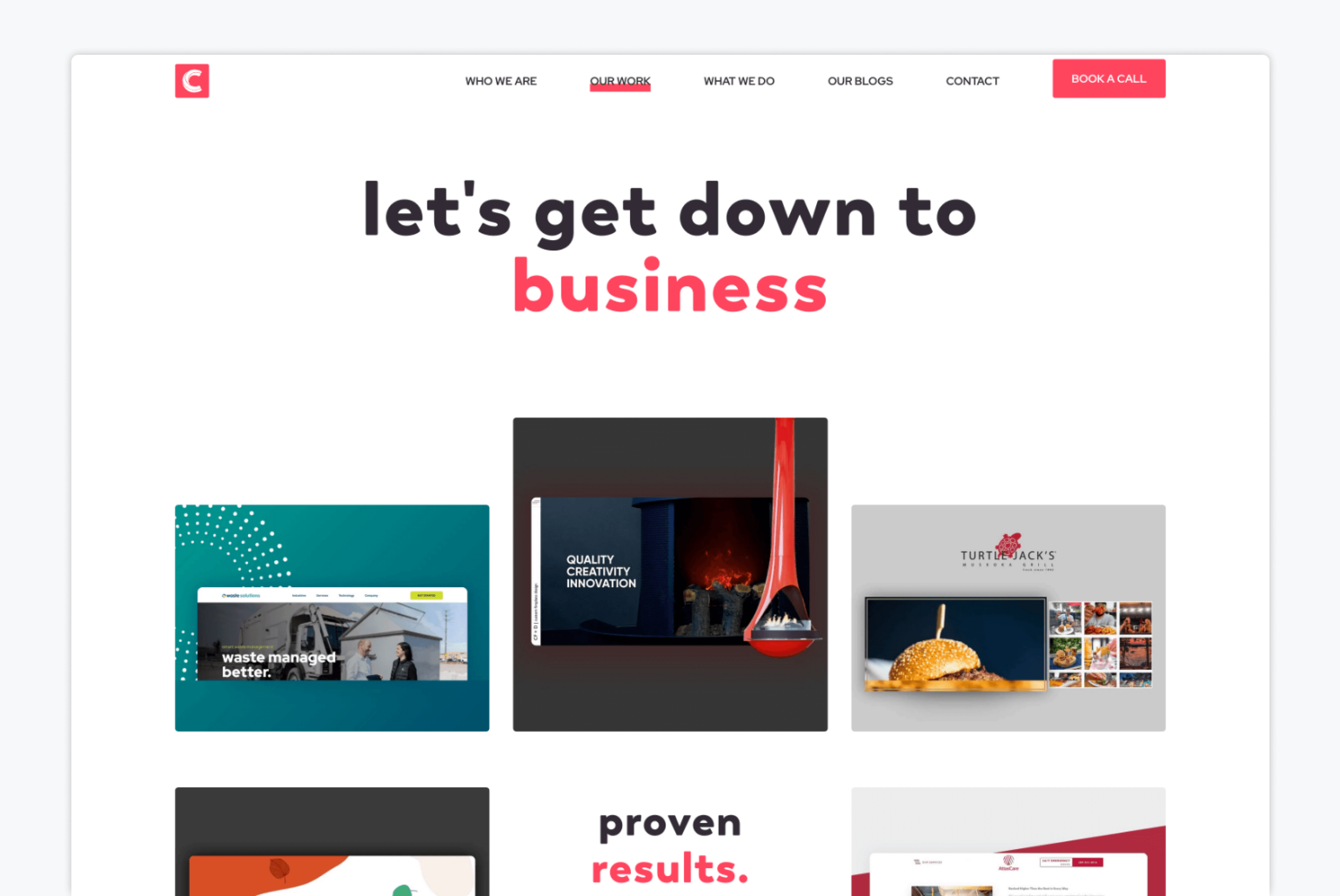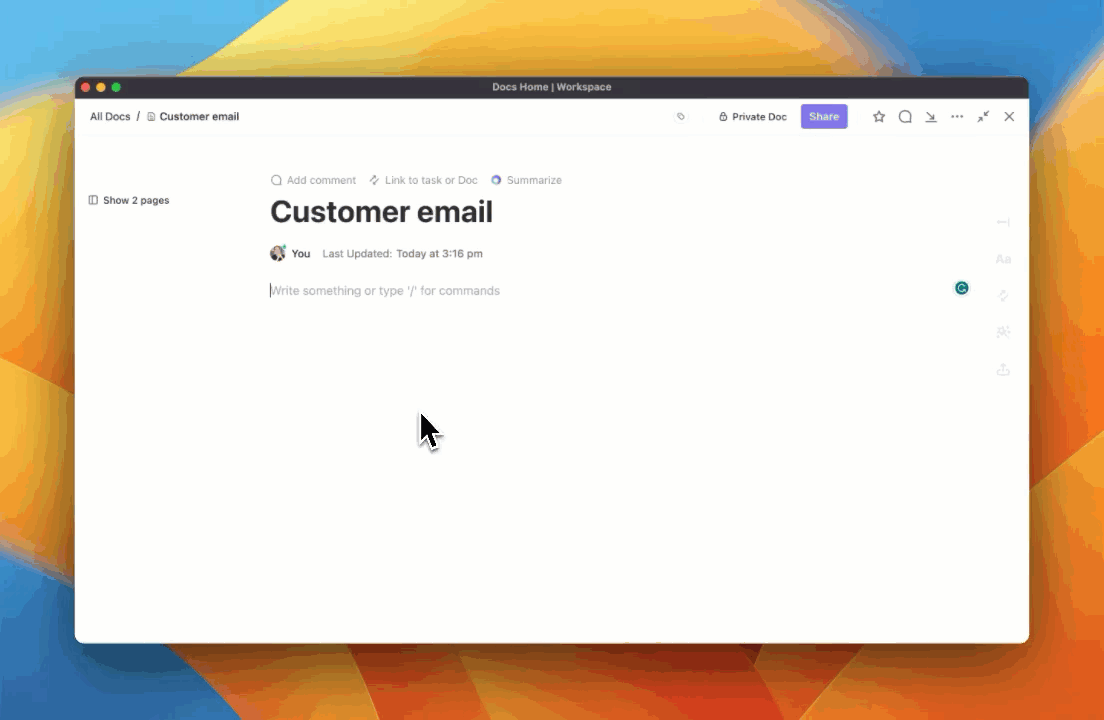Does your creative agency’s portfolio feel like a random collection of projects? If so, it’s time to give it focus.
If you run a creative agency (marketing, social media, or advertising), landing clients is often the biggest challenge. A strong portfolio showcasing your best work can make all the difference. Clients want to see the results you can deliver, and your past projects are the ultimate proof of your agency’s skills and expertise.
In this article, we’ll cover:
- What a creative agency portfolio is.
- How to create a portfolio that attracts high-ticket clients.
- Answers to common questions about building effective agency portfolios.
Let’s jump right in!
First Things First, What Is a Creative Agency Portfolio?
A creative agency portfolio is a collection of your best work designed to showcase your expertise.
Think of it as your résumé. But instead of applying for jobs, you’re pitching your services to potential clients.
Every great portfolio should include these key components:
- A brief introduction explaining the type of work featured in the portfolio.
- 3-10 top projects that truly highlight your expertise.
- Client testimonials or quotes that build trust and credibility.
Optionally, you can add a note inviting clients to reach out if they don’t see exactly what they’re looking for. This allows you to offer more tailored examples of your past work and makes your portfolio feel more personal.
6 Tips for Building a Strong Creative Agency Portfolio
Tip 1: Define Your Ideal Client
Start by creating a detailed client persona. Identify their industry, challenges, goals, and values. Then, curate your portfolio to feature projects that solve similar problems or align with their expectations.
For example, if you’re targeting luxury brands, prioritize high-end, visually striking work. If you aim at B2B tech startups, showcase innovative, growth-driven campaigns.
📖 Related Read: B2B Social Media Ideas to Make Your Campaigns Less Boring
Tip 2: Include a Diverse Range of Project Types
Honestly, throwing a bunch of random case studies into your portfolio and hoping they’ll stick is never a good idea.
They won’t.
Instead, select a mix of projects that highlight your range of skills, such as branding, web design, social media campaigns, or video production. Balance showcasing work for big-name clients with smaller, more creative, or experimental projects.
Your portfolio should feel tailored to your ideal clients. To achieve that, you need to strategically curate your portfolio by:
- Highlighting your strengths: If your agency specializes in digital campaigns, include examples that showcase metrics like ROI, engagement rates, or creative strategies with proven results.
- Targetting specific industries: If you’re focusing on a particular sector, feature case studies that resonate with that audience—52% of B2B buyers consider case studies “very important” when evaluating vendors.
- Appealing to high-ticket clients: Include projects that demonstrate solving big challenges with clear, measurable results.
To make each project stand out, don’t forget to add context, including:
- What was the client’s problem?
- What solution did you provide?
- What impact did it have?
💡Avoid overloading your portfolio—each project should feel intentional and relevant, not filler.
Tip 3: Choose the Right Format for Showcasing Your Work
How you present your portfolio matters just as much as what’s in it. The right format ensures your work is easy to access, visually appealing, and impactful.
Here are some ideas on where to store your creative agency portfolio:
| Format | Where to display it | Benefits |
| Dedicated portfolio page | Your website | Easy to navigate, customizable branding, and can include CTAs for inquiries. |
| Third-party platforms | Behance,Canva Portfolio Website Maker, LinkedIn | Increases visibility, attracts industry-specific leads, and connects with a broader audience. |
| Custom PDF or slide decks | Can be sent via email directly to the client | Personalizes your presentation, allowing you to pitch directly to specific client needs. |
| Social media showcases | Instagram, TikTok | Perfect for visual storytelling, engaging content, and reaching clients where they’re most active. |
Having a dedicated portfolio page on your website is perhaps one of the most common and effective ways to showcase your work. Take a look at these examples from a few of our agency partners to see it in action:

That said, whichever format you choose, ensure your work looks professional and your contact details are easy to find.
Tip 4: Create Visuals That Highlight Your Work’s Quality
You’re an agency, after all—clients expect your portfolio to look visually stunning. So, when creating your portfolio, focus on ensuring every project is presented professionally and clearly.
Use visuals that add context and impact:
- Mockups: Show your work in real-world scenarios (e.g., branding on products, ads on screens).
- Before-and-after comparisons: Highlight the transformation your agency achieved.
- Interactive elements: Use videos or GIFs to showcase dynamic campaigns or web designs in action.
Keep the portfolio layout clean and intuitive. Avoid over-styling or clutter that distracts from your work. Use a consistent color palette and typography that reflect your agency’s branding.
Tip 5: Highlight Your Unique Value Proposition
The competition among agencies is fierce. According to one study, 90,800 marketing agencies were operating in the US in 2023, up from 86,814 in 2022, reflecting a 4.6% increase. With so many agencies entering the market, you must find a way to stand out!
Think about what sets your agency apart. And make sure to demonstrate that in your portfolio!
Do you specialize in a specific niche? Offer groundbreaking creative strategies? Or consistently deliver measurable results?
Highlight projects that showcase your strengths and back them up with data or testimonials.
Tip 6: Keep Your Portfolio Up to Date
One clear way to lose a potential client? Present them with an outdated portfolio.
Clients want to see your latest work and what your agency can do right now. Regularly update your portfolio to include recent projects that reflect current trends and your agency’s evolving expertise.
Remove old or less impressive work that no longer represents your capabilities. Instead, focus on high-impact projects that align with the clients you want to attract.
FAQs About Creating An Effective Agency Portfolio
Even if you don’t have many projects under your belt, you should still have a portfolio. Use mock projects to showcase your skills, or offer to create something for a business at a reduced fee in exchange for a testimonial.
Curate your portfolio for each pitch. Keep a master portfolio and create tailored versions for specific industries or clients.
Simply organize your portfolio by service categories, such as branding, social media, or web design. This structure makes it easy for potential clients to find work relevant to their needs.
Wrapping Up
Your agency portfolio is one of the most important tools for landing clients. Make sure it showcases your best work, looks professional, and speaks directly to the people you want to work with. If it’s outdated, take some time to refresh it. If you don’t have one yet, start small—focus on a few strong projects to get it off the ground.
And once you start landing new clients, you’ll need a tool to manage them without losing your mind. That’s where Gain comes in.
Gain makes social media management and client collaboration ridiculously easy with features like automated approvals, content scheduling, and dedicated client workspaces.Ready to see how Gain can save you time and headaches?
Try it for free—no credit card required!










